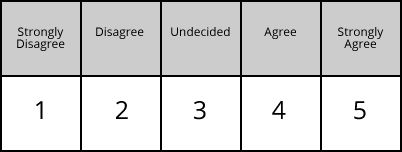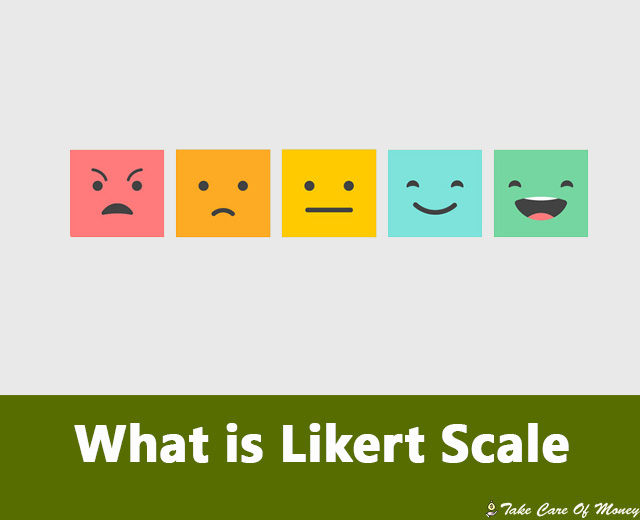Table of Contents
A key piece in supply chain management is planning. The plan will serve to increase performance by reducing inventory and expense operating. To carry out this work, a good manager can use different methods and systems, such as the Likert Scale.
The Likert Scale will help a qualitative evaluation, that is, it will measure the quality or satisfaction generated by a certain aspect of the planning that may already be working or is planned to be implemented.
Table of Contents
- What is the Likert Scale?
- How is the Likert Scale made?
- How to use the Likert Scale?
- Likert Scale Examples
- 7 point Likert scales
- Use of Likert Scale for Supply Chain Planning
- Advantages of using the Likert Scale
What is a Likert Scale?
The Likert Scale is a measurement system that is applied to surveys in order to analyze opinions or measure positions based on question formats that include a variety of fixed answers, usually five or seven, from which the respondent must choose.
The use of the Likert Scale is a very advantageous option because the results can be observed graphically and quite quickly, which will help in the agility of the decision-making process.
How is the Likert Scale made?
In view of the answers chosen by the individual, their affinity or disagreement with a series of questions can be verified, since the response options will always be raised from the “totally agree” to the “totally disagree”.
Precisely this configuration is one of the advantages of the Likert Scale, which will never deliver a simple yes or no answer but will refer to a certain degree of inclination, rejection or even refraining from commenting on a particular topic.
Applied to the analysis of the supply chain, having this tool means adding new data to the analysis and enriching its results.
How to use the Likert Scale?
The Likert Scale is an instrument for measuring data within an investigation. It consists of:
- A series of items that will be statements to which the respondent has to react, based on aspects on which information is to be obtained.
- A series, between 3 and 9, response points that go from totally agree to totally disagree. Each answer has a numerical value assigned to quantify the results at the end.
From the sum of all the values of the answers that the respondent has offered, the position of the latter within the scale will be obtained.
Likert Scale Examples
The Likert scale is a 5 or 7 point scale which is used to allow an individual to express how much they agree or disagree with a particular statement. In addition to measuring statements of Agreement, Likert scales can measure other variations such as Frequency, Quality, Importance, and Likelihood, etc.
Following are few examples showing on basic of which five-point scale survey can be done.
Strongly Agree Likert Scale
- Strongly Agree
- Agree
- Undecided
- Disagree
- Strongly Disagree
Frequency
- Always
- Often
- Sometimes
- Rarely
- Never
Importance
- Very Important
- Important
- Moderately Important
- Slightly Important
- Unimportant
Agreement
- Quality
- Excellent
- Good
- Fair
- Poor
- Very Poor
Likelihood
- Almost Always True
- Usually True
- Occasionally True
- Usually Not True
- Almost Never True
Likelihood
- Definitely
- Probably
- Possibly
- Probably Not
- Definitely Not

Likert scale 7 levels:
- Know the variable to measure. Taking into account the objectives pursued with the research, in this case improve the supply chain to increase its performance.
- Prepare items related to the variable to be measured.
- Provide the scale to certain subjects who will judge the variables.
- Assign the score to each item.
- Assign the score of each subjects surveyed.
- Carry out the analysis of the items.
- Build a final scale.
- Analyze the data obtained.
One aspect to consider when working with the Likert Scale is the reliability that is usually measured with the split-halves method. A certain degree of reliability is necessary for the scale to be valid.
If you are interested in this topic, we also recommend you to download, for free, our guide on industrial production sectors.
Use of Likert Scale
A planning report is necessary to analyze the most suitable proposals to improve or modify the supply chain. The Likert Scale can be used to carry out this analysis involving teams in decision making.
In all planning areas, whether tactical or operational, it is important to maintain an adequate flow of information in order to adjust the improvements that have been made or introduce innovations that generate more benefits.
The information obtained from the Likert Scale may come from different areas within the supply chain and subjects of any link in the chain may be involved.
Advantages of using the Likert Scale
- Construction and simple application.
- Ease of understanding by respondents.
- Suitable for its realization by different means such as by phone, by mail or in personal interviews.
Disadvantage of Likert Scale
The great disadvantage of using the Likert Scale for supply chain planning is that it requires more time to complete than other types of surveys since respondents have to read and understand each of the items that make up the survey.
